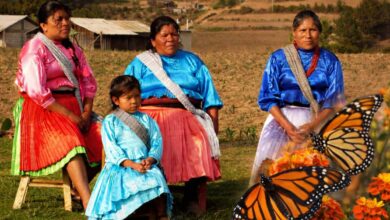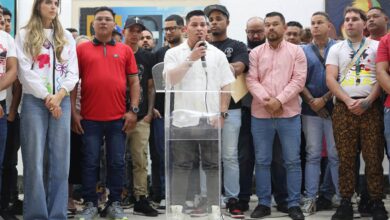How do the most violent countries in Latin America regulate weapons?

Latin America is going through a time of controversy over the regulation of the use of firearms. Photo: Pixabay
LatinAmerican Post | Daniel Vargas Bozzetto
Escucha este artículo
Leer en español: ¿Cómo regulan las armas los países más violentos de Latinoamérica?
With the new firearms regulation, Brazil runs the risk of following in the footsteps of Venezuela or Mexico, where homicides are part of everyday life.
With the new decrees announced by President Jair Bolsonaro, more lax and permissive than the previous ones, Brazil is on the way to becoming the "wild west" of South America. E l carioca will presumably be the only country in Latin America that allows citizens to own up to 6 weapons and even if it claims to be 60 sportsmen.
The decrees contemplate that from now on it is possible to obtain, in the same administrative procedure, a registration certificate, a firearm registration certificate, and a traffic guide, "saving public resources and time for athletes."
Bolsonaro prometió en su llegada al poder liberalizar el mercado armamentístico y facilitar el acceso a la ciudadanía general. Desde 2018 ha crecido en un 65% la tenencia de armas en Brasil. La oposición ha rechazado la medida y afirman que la recurrirán ante la justicia. pic.twitter.com/R6BzLQnI7K
— Descifrando la Guerra (@descifraguerra) February 17, 2021
This de-bureaucratization of the arms purchasing process constitutes a potential increase in illegal sales in a country where up to 122 people were killed during a four-day police strike.
But, how is the possession of weapons regulated in the rest of Latin American countries? Let's look at the state of affairs in two of the most violent countries in the region.
Also read: What is Colombia looking for by regulating about 1 million Venezuelans?
Venezuela
According to the data provided by Amnesty International in a 2017 report, Venezuela is the third Latin American country with the most weapons in the hands of the civilian population, with 5,900,000 units. In the first place, it should be noted, is Brazil, with 17,500,000.
The relationship of the Bolivarian Republic with firearms is complex. His government vetoes them at the same time that it harangues one part of the population to target them against another. And it is not enough that the Venezuelan legislation prohibited the possession of weapons so that in 2017, during the massive citizen protests that toured the country, Nicolás Maduro refrained from uttering a threat that would go down in history: “if the Bolivarian Revolution were destroyed, we would never give up and what could not be done with the votes we would do with arms ”.
Caracas, en Venezuela; San Juan de Puerto Rico y Ciudad de Panamá encabezan la lista de las capitales más violentas de Latinoamérica en el más reciente informe de InSight Crime. https://t.co/4BHHNIYmY6
— InSight Crime ES (@InSightCrime_es) March 8, 2020
The Chavista leader was not referring only to those wielded by the military, but to those illegally carried by the so-called "collectives", paramilitary groups organized by Hugo Chávez to defend the Revolution.
Despite the fact that Article 113 of the Law for the Disarmament and Control of Arms and Ammunition provides penalties of four to eight years in prison for anyone who "carries a firearm or ammunition, in meetings, demonstrations or public shows", who ended up deprived of liberty were several of the protesters themselves.
In other words, for practical purposes, owning a weapon in Venezuela does not carry any type of effective sanction. However, the Caribbean country is a paradigmatic example of what happens when weapons abound in society.
The repression of the so-called Venezuelan Spring killed more than 120 people and injured thousands, but the killings have not stopped. Insight Crime's balance sheet on homicides in 2020, published at the end of January, places the Caribbean country in second place on the list of Latin countries with the highest homicide rate, with 45.6 murders per 100,000 inhabitants, only 0, 9 points behind Jamaica.
According to the Annual Report of the Venezuelan Violence Observatory, last year there were 11,891 homicides in the country, of which 4,231 “were committed by the State security forces, due to excessive use of force or through extrajudicial executions” and 4,153 – 78 fewer – were perpetrated by criminals.
Mexico
Inspired by the Second Amendment to the US Constitution, the tenth article of the Mexican Constitution contemplates the right of the citizen to possess weapons at home for their "security and self-defense, with the exception of those prohibited by law."
During the decade 2009-2019, the government sold 450,000 weapons, while the records show the existence of more than 2 million whose provenance is illegal; Amnesty International estimates that the Mexican population is in possession of 16,800,000 weapons.
In 2019, the National Institute of Statistics and Geography revealed that in crimes where the victim was present, the offenders carried some type of firearm in 45.6% of the cases. In the first semester of 2020 alone, 17,123 people were killed in Mexico, of which 12,398 died due to a gunshot.
One of the most endemic violent phenomena in Mexico is the murder of politicians. During the 2018 electoral campaign, 152 were assassinated. Especially shocking was the death of the candidate for deputy Fernando Purón. Security cameras captured how the murderer approached him from behind while the politician posed for a selfie and shot him in the head.
Suscribo. Esa estrategia debe centrarse en pedir a EEUU penalice a las personas que trafican armas a México de la misma manera como EEUU presiona a México para que desarticule carteles y reduzca el flujo de drogas. Quid pro quo. Gracias por el RT. https://t.co/16f8rsopSM
— Dolia Estévez (@DoliaEstevez) February 16, 2021
Also, with such high crime figures, the number of police officers killed becomes doubly worrisome. According to the Causa en Común observatory, 2020 registered a total of at least 524 deceased officers, 78 more than in 2019, which is equivalent to 1.42 police officers per day.
Sadly common are also accidental deaths from firearms. Last October, in Chihuahua, a TikToker was shot in the head, allegedly inadvertently, while recording a mock kidnapping with a group of friends for the social network. In November, the Honduran newspaper Tiempo reported the death of a 6-year-old girl at the hands of another boy who, playing with his grandfather's shotgun, took his life. Two weeks ago, in Zimapán, a young man died after shooting himself while playing with a weapon.




